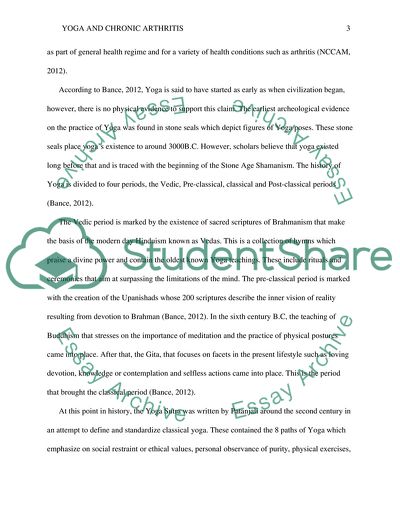Cite this document
(Yoga and Chronic Arthritis Research Paper Example | Topics and Well Written Essays - 2500 words, n.d.)
Yoga and Chronic Arthritis Research Paper Example | Topics and Well Written Essays - 2500 words. https://studentshare.org/health-sciences-medicine/1774154-yoga
Yoga and Chronic Arthritis Research Paper Example | Topics and Well Written Essays - 2500 words. https://studentshare.org/health-sciences-medicine/1774154-yoga
(Yoga and Chronic Arthritis Research Paper Example | Topics and Well Written Essays - 2500 Words)
Yoga and Chronic Arthritis Research Paper Example | Topics and Well Written Essays - 2500 Words. https://studentshare.org/health-sciences-medicine/1774154-yoga.
Yoga and Chronic Arthritis Research Paper Example | Topics and Well Written Essays - 2500 Words. https://studentshare.org/health-sciences-medicine/1774154-yoga.
“Yoga and Chronic Arthritis Research Paper Example | Topics and Well Written Essays - 2500 Words”. https://studentshare.org/health-sciences-medicine/1774154-yoga.


